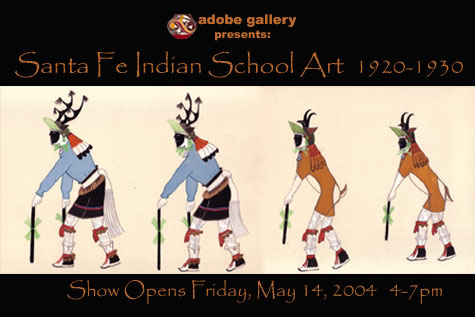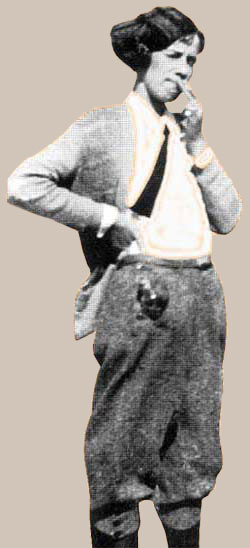Santa Fe Indian School Art
May 07, 2004 until June 15, 2004

Adobe Gallery proudly presents from its own collection of Santa Fe Indian School Art and from the collection of Robert & Linda Hull:
This collection was amassed by a brother and sister by the name of Haas from St. Petersburg, Florida who traveled to the Southwest in the 1930s and 1940s, and purchased the paintings from students of the Santa Fe Indian School.
The Haas' passed the collection to Ida Cross who, in turn, gave them to Mrs. Hull, the mother of Robert Hull, from whom Adobe Gallery acquired them.
“When Dorothy Dunn established in 1932 the Studio, the fine-arts program at the Santa Fe Indian School, she helped coalesce local and national movements to formulate a painting genre and foster an international market for Indian painting. Although she directed the program for only five years, the Studio continued until 1962.
“Dunn insisted that her students, who ranged in age from adolescence to early 20s, develop a unique style and not mimic societal fashions or expectations. Dunn and her supporters believed that through the establishment of an original style Indian artists would ‘produce articles of real worth, not Indian curios.’ This would, in essence, be the true American art.
“These painters worked in a style characterized by flat outline and color without modeling or the use of perspective.  “Dunn assumed that an innate artistic ability resided in each of her students; therefore, her method stressed encouraging the student's own natural ability rather than her ‘teachings’ about art. Specifically, Dunn believed she could not teach Indian painting because her students, as Indian people, inherently knew more about it. It was her role to reveal to her students their own intrinsic knowledge and understanding of this indigenous art-form. The students, to their credit, always painted from their own experiences, producing authentic portraits of their lives.
“Dunn assumed that an innate artistic ability resided in each of her students; therefore, her method stressed encouraging the student's own natural ability rather than her ‘teachings’ about art. Specifically, Dunn believed she could not teach Indian painting because her students, as Indian people, inherently knew more about it. It was her role to reveal to her students their own intrinsic knowledge and understanding of this indigenous art-form. The students, to their credit, always painted from their own experiences, producing authentic portraits of their lives.
“Dunn's goals of facilitating the development of artists and enlisting public interest in Indian painting were being met with overwhelming success.
“Dunn and mentors Dietrich and Kenneth Chapman, curator of the Museum of New Mexico, believed that by stimulating patronage of Indian painting as a genuine artistic endeavor they would gradually supplant the influence of Indian traders who encouraged artists to make inexpensive souvenirs for the tourist market. ”
—excerpts from Modern by Tradition: Dorothy Dunn & the Studio Style by Bruce Bernstein (1995 Museum of New Mexico Press)

